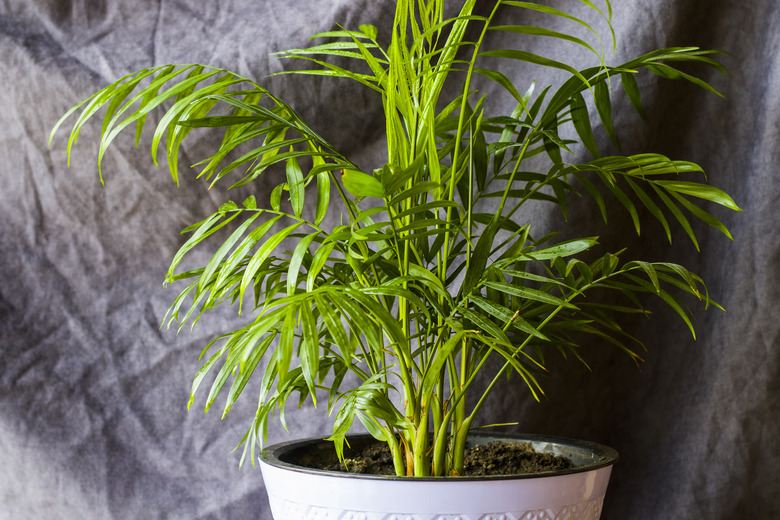Is The Areca Palm Plant Toxic To Cats?
The areca palm (Dypsis lutescens, U.S. Department of Agriculture plant hardiness zones 10 and 11) may be an exotic tropical plant, but it can live indoors if you provide the appropriate climate for it to thrive. If you happen to have a cat puttering around your home that feels and acts like the king of your jungle, don't worry — it will be able to coexist with the areca palm without getting sick. You can have your palm and furry friend too.
Tip
The areca palm is not toxic to cats, dogs or horses.
What Is the Areca Palm?
The areca palm is native to Madagascar and is one of the most popular palms because it's great for individuals who want to grow a palm indoors. If you're going to keep an areca palm indoors, this medium-sized plant can grow 6 to 8 feet tall in a container, but it can reach 20 to 25 feet tall when grown outdoors. When grown indoors, the areca palm prefers a bright location in a warm to average room with high humidity.
The areca palm has multiple reedlike stems that shoot from one base and broad, arching green fronds (leaves). Each feathery frond has 40 to 60 leaflets, and in the summertime, yellow flowers grow on the palm. The areca palm is known as the "butterfly palm" because the leaves curve upward into multiple stems, making the palm look like a butterfly.
If you own a cat, you don't have to worry about the palm harming your curious pet. Areca palms are not only nontoxic to cats but to dogs and horses as well.
Areca Palm Indoor Temperatures
Although areca palms like bright light, you have to make sure that you do not place this palm in direct sunlight. If you do put it in direct sunlight, the leaves will turn yellowish-green. Since the areca palm is a tropical plant, it thrives in high humidity environments. When growing and caring for this plant indoors, the average room temperature should range from 65 to 75 degrees Fahrenheit.
Try to keep the palm away from cold windows and heat sources in the winter and air conditioners in the hotter months. If you want to place your palm outside when the temperatures start to get warmer, make sure that the night temperatures do not dip below 50 F. Areca palms are sensitive to cold temperatures, so you never want it growing in a cold environment.
Areca Palm Care
When planting an areca palm, make sure to use a quality potting mix. You can fertilize the palm monthly from spring through midsummer. Make sure that you're using a balanced liquid fertilizer according to the package directions. You never want to give your palm a lot of fertilizer because overfeeding it can cause spots on its leaves.
When you water your palm, allow the top 1 to 2 inches to dry out before you water it again. You never want your palm sitting in water, so good drainage is essential. If you forget to check the soil, the palm fronds will wilt when water is needed, so that is a good telltale sign to water your plant.
As soon as you water it, the fronds will perk back up. Never add chemicals or salt to your water because this will cause freckle-like spots on the areca palm's fronds. Using distilled or filtered water is best.
